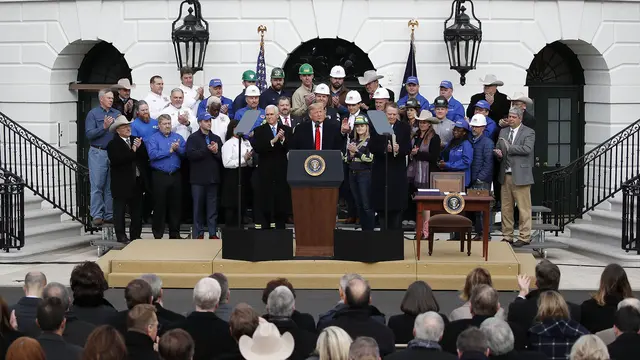
U.S. President Donald Trump on Wednesday signed into law a revised trade deal with Mexico and Canada that replaces the North American Free Trade Agreement. At an event at the White House, the American leader was surrounded by administration officials and American workers.
"For the first time in American history, we have replaced a disastrous trade deal that rewarded outsourcing with a truly fair and reciprocal trade deal that will keep jobs, wealth and growth right here in America," Trump said during the signing ceremony. "And in a true sense, it's also a partnership with Mexico and Canada and ourselves against the world. It's really a trade partnership if you look at it that way."
As a presidential candidate, Trump blasted NAFTA, enacted in 1994 under then-President Bill Clinton. Trump pledged to tear it up. But once in office, his administration chose to renegotiate the deal instead. Some say the new agreement, named the U.S.-Mexico-Canada Agreement, or USMCA, is essentially a modernized version of its predecessor. By some estimates, 85 percent of the new deal mirrors NAFTA.
There were some differences between the version Trump proposed and the version Trump signed. That’s because the agreement had to be approved by the U.S. House of Representatives. The lower legislative body of the American Congress is controlled by opposition Democrats, who claimed their own victory in negotiating key changes to the deal.
"We were able to make vast improvements," said U.S. House Speaker Nancy Pelosi, a California Democrat. "If we weren't, we would not have been able to pass the bill. We would not even wanted to pass the bill. But it passed with overwhelming support and we wanted to do that for America's workers, America's farmers, America's economy."
For its part, Mexico ratified the agreement in December, even though new language could mean fewer U.S. automakers will make their cars south of the border, and more American jobs will likely stay in America.
Last but not least, Canada's House of Commons on Wednesday began debating the final text. Prime Minister Justin Trudeau, who negotiated the deal when he had a majority government, but now leads a minority one, promised not to rush the process.
"Millions of Canadians depend on stable, reliable trade with our largest trading partners, from farmers in Alberta and autoworkers in Windsor to aluminum producers in Saguenay and entrepreneurs in St. John's or in Vancouver," Trudeau said.
Canada agreed to open up its dairy industry to the U.S. But Ottawa insisted on keeping a dispute resolution mechanism, known as Chapter 19, in place. And it did.
"Canada always wanted to make sure that any agreement is rules-based," said Mary Scott Greenwood. Greenwood served as chief of staff to the US Ambassador to Canada under the Clinton administration. "The United States thinks it can throw its weight around and people will do a deal because the size of the marketplace. A country like Canada says, we need to be able to abide by the rules and have everyone abide by the rules, because we’re not the biggest player in the room.”
It could be weeks before Ottawa ratifies the deal. But that's not stopping Washington from taking a victory lap. In particular, Trump.
"Everybody said this was a deal that could not be done. Too complicated, too big, couldn't be done," Trump said. "We got it done. And today, we're finally ending the NAFTA nightmare."
"He's definitely basking in the glow of this achievement," said Greenwood. "But there's a lot of good to go around.”
Trump, of course, has also tackled trade across both the Atlantic and Pacific, withdrawing from some multilateral deals while seeking new bilateral ones.
"The whole world watches what the US does," Greenwood added. "And if the US couldn’t get it over the goal line with Canada, who could they get it done with?"
 简体中文
简体中文

